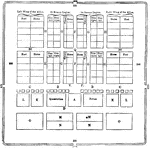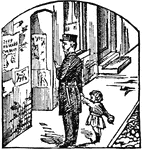
Arma
"Homer describes in various passages an entire suit of armour, and we observe that it consisted of the…

Arma
"Homer describes in various passages an entire suit of armour, and we observe that it consisted of the…
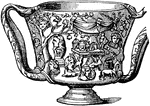
Carchesium
"A beaker or drinking-cup, which was used by the Greeks in very early times. The same term was used…
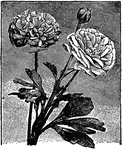
Ranunculus
"Ranunculus, buttercup, crowfoot; the typical genus of the order Ranunculaceæ. Known species about…
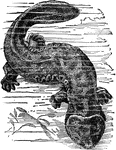
Salamander
"Salamander is a genus of reptiles closely allied to the frog, from which it differs in having an elongated…

Saturn
"Saturn is the 6th of the major planets in order of distance from the sun, and the outermost known to…

Hot Blast Smelting Furnace
"Smelting is the act or process of obtaining metal from ore by the combined action of heat, air, and…
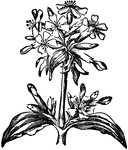
Soapwort
"Soapwort (Saponaria), a genus of plants of the natural order Caryophyllaceæ; so called because…

Spoonbill
"Spoonbill is the popular name of the birds of the genus Platalea, belonging to the heron family (Ardeidæ),…

Cestus
"The thongs or bands of leather, which were tied round the hands of boxers, in order to render their…
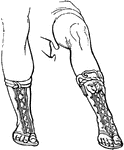
Cothurnus
"A boot. Its essential distinction was its height; it rose above the middle of the leg, so as to surround…
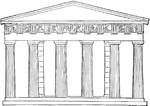
Thesium restored
"The Theseum is situated on a height to the north of the Areopagus, and was built to receive the bones…

Parthenon restored
"The Parthenon stood on this highest part of the Acropolis, near its centre, and probably occupied the…

Erechtheum restored
"The building of the new Erechtheum was not commenced till the Parthenon and Propylea were finished,…
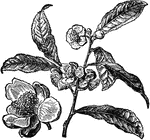
Tea Plant
"Tea is the dried leaf of an evergreen shrub of the natural order Ternstœmiaceæ. It includes the China…
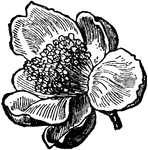
Tea Flower
"Tea is the dried leaf of an evergreen shrub of the natural order Ternstœmiaceæ. It includes…

Tea Fruit
"Tea is the dried leaf of an evergreen shrub of the natural order Ternstœmiaceæ. It includes…
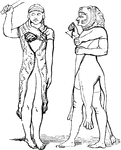
Greek soldiers
"'Exulting in the tawny covering of a she-wolf, such as his foster-parent was.' Alluding to the custom…

Eyebright
A genus of plants of natural order Scropulariaceæ. having a tubular calyx, the upper lip of the…
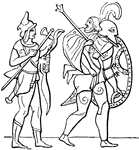
Sceptrum
"Sceptrum, which originally denoted a simple staff or walking stick, was emblematic of station and authority.…

Boxer with cestus
"The cestus was used by boxers from the earliest times. It consisted of thongs of raw ox-hide, or of…
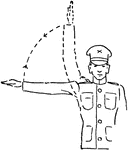
Squads Right, March
"Raise the arm laterally until horizontal; carry it to a vertical position above the head and swing…
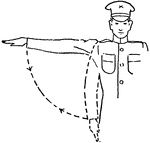
Squads Left, March
"Raise the arm laterally until horizontal; carry it downward to the side and swing it several times…

Squad Right About, March
"Extend the arm vertically above the head; carry it laterally downward to the side and swing it several…

Eyes right
At the command right, turn the head to the right oblique, eyes fixed on the line of eyes of the men…

Soldier with Rifle
"In resuming the order from any position in the manual, the motion next to the last concludes with the…
Order Arms Standing
"The butt rests evenly on the ground, barrel to the rear, toe of the butt on a line with toe of, and…

Emperor Meiji
Emperor Meiji (November 3, 1852 – July 30, 1912), or Meiji the Great, was the 122nd Emperor of Japan…

Kneel
"Kneel on right knee, sitting as nearly as possible on the right heel; left forearm across left thigh;…
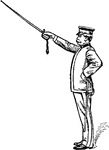
Drawn Saber
"When publishing orderes, calling the roll, etc., the saber is held suspended from the right wrist by…

Drawn Saber
"When arms are brought to the order the officers or enlisted men with the saber drawn order saber."…
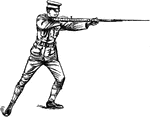
Bayonet Thrust
"The force of the thrust is delivered principally with the right arm, the left being used to direct…

Spur
An instrument having a little wheel, with sharp points, worn on a horseman's heels, to prick a horse…
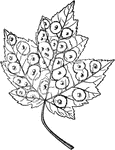
Maple spot gall
"The maple spot gall, so common on the leaves of the red maple, is made by the fungus-gnat of the order…

First order prism
"The prism of the first order consists of four rectangular vertical faces, each of which intersects…

Second order prism
"The prism of the second order consists of four rectangular vertical faces, each of which intersects…

First order pyramid
"The pyramid of the first order is a form consisting of eight isoceles triangular faces, each of which…

Second order pyramid
"The pyramid of the second order is a form composed of eight isoceles triangular faces, each of which…
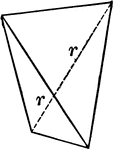
Sphenoid
"It consists of four isoceles triangular faces which intersect all three of the crystallographic axes,…
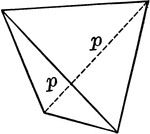
Sphenoid
"It consists of four isoceles triangular faces which intersect all three of the crystallographic axes,…
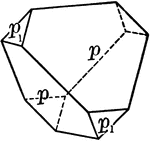
Sphenoid, positive and negative
"It consists of four isoceles triangular faces which intersect all three of the crystallographic axes,…

Scapolite
"A crystal of scapolite, upon which the faces of the third-order pyramid are shown." — Ford, 1912
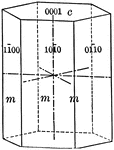
Prism of the first order
"This is a form consisting of six rectangular vertical faces each of which intersects two of the horizontal…
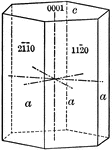
Prism of the second order
"This is a form consisting of six rectangular vertical faces, each of which intersects two of the horizontal…
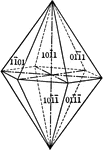
Pyramid of the first order
"This form consists of twelve isoceles triangular faces, each of which intersects two of the horizontal…
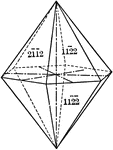
Pyramid of the second order
"This is a form composed of twelve isoceles triangular faces, each of which intersects two of the horizontal…

Apatite
"A complex crystal of apatite with the faces of a third-order pyramid upon it." — Ford, 1912
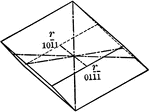
Positive rhombohedron
"The rhombohedron is a form consists of six rhombic-shaped faces, which correspond in their position…
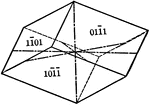
Negative rhombohedron
"The rhombohedron is a form consists of six rhombic-shaped faces, which correspond in their position…
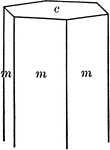
Beryl
"Hexagonal. Strong prismatic habit. Frequently vertically striated and grooved. Forms usually present…
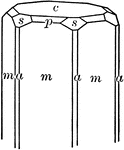
Beryl
"Hexagonal. Strong prismatic habit. Frequently vertically striated and grooved. Forms usually present…
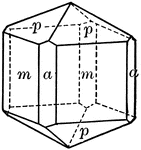
Wernerite
"Tetragonal; tripyramidal. Crystals usually prismatic. Prominent forms are prisms of the first and second…

Wernerite
"Tetragonal; tripyramidal. Crystals usually prismatic. Prominent forms are prisms of the first and second…
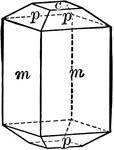
Vesuvianite
"Tetragonal. Prismatic in habit. Often vertically striated. Common forms are prisms of first and second…
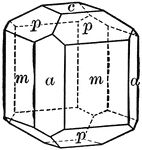
Vesuvianite
"Tetragonal. Prismatic in habit. Often vertically striated. Common forms are prisms of first and second…
